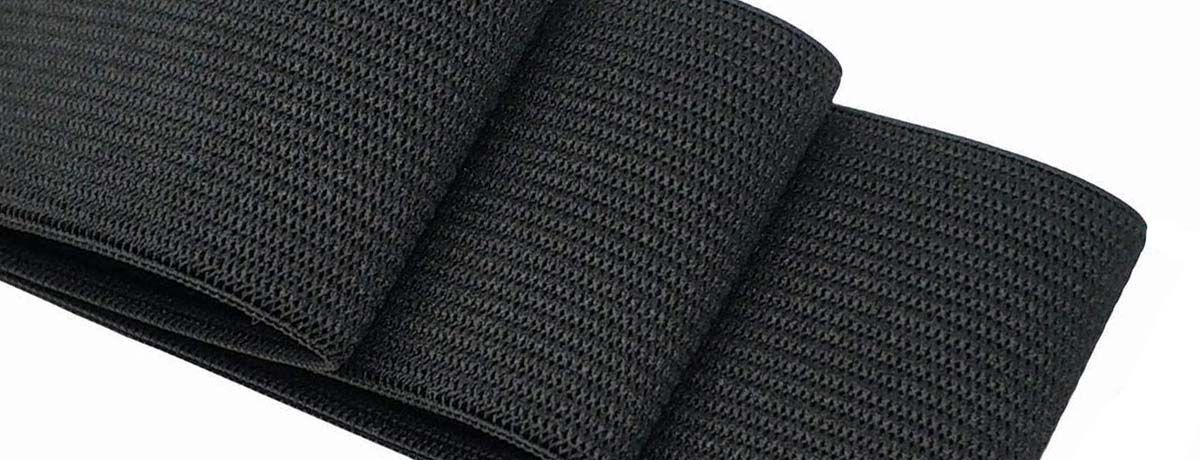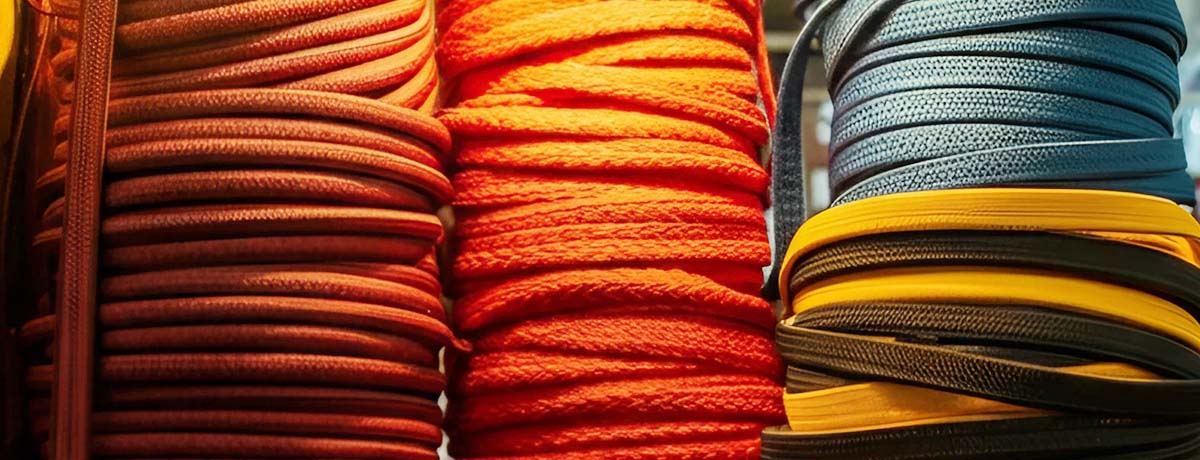Understanding Belting Elastic: A Guide for Manufacturers and Traders

Belt elastic is an essential material in the textile and garment industries, known for its flexibility, elasticity, and versatility. With applications ranging from waistbands to straps, belts, and other accessories, it has become a staple for manufacturers and traders, contributing positively to both functional and sustainable contexts.
But selecting the right belting elastic is critical. Different projects demand various types of materials, widths, colors, and stretch levels. This guide covers everything you need to know as a garment manufacturer, textile trader, or wholesaler to make informed choices.
What is Belting Elastic?
Belting elastic is a type of fabric designed to offer stretch and recovery, ideal for use in projects requiring flexibility. It is often used for waistbands, belts, suspenders, and crafting straps. Shipping costs for belting elastic will be calculated at the point of checkout, emphasizing transparency in the purchasing process.

Key characteristics of belting elastic include:
-
Variety in Widths and Colors: Belting elastic comes in diverse widths and colors to match specific project needs.
-
Material Options: Common materials include woven elastic, knit elastic, and braided elastic, each offering different levels of durability and stretch.
-
Versatile Applications: From sewing to crafting and DIY projects, belting elastic is a critical component for a wide range of uses.
Understanding these fundamentals ensures you pick the most suitable type of elastic for your projects.
Choosing the Right Belting Elastic
Selecting the best belting elastic requires aligning its features to your project’s requirements. Here are the factors to consider:
1. Width and Length
The width and length of the belting elastic should align with your end product. Waistbands, for example, typically require wider elastic, while thin straps need narrower elastic.
2. Material and Stretch
Different materials offer varying levels of elasticity and durability:
-
Woven Elastic: Strong and durable, ideal for heavy-duty projects.
-
Knit Elastic: Soft and flexible, perfect for lightweight garments.
-
Braided Elastic: Suitable for casings or projects requiring firm stretch.
3. Machine Compatibility
Ensure the elastic is compatible with your sewing equipment. Using the wrong type could complicate stitching or damage your machines.
4. Color and Texture
Many projects demand specific aesthetics. Whether you need neutral tones or vibrant colors, choose an elastic that matches your design vision.
5. Reviews and Reliability
When purchasing, check reviews and ratings to confirm the quality and performance of the belting elastic. Reliable feedback from other buyers can guide you toward the right choice.
Where to Buy Belting Elastic
A variety of sources offer belting elastic, but finding reliable suppliers is key for manufacturers and traders. Shipping costs for belting elastic will be calculated at the point of checkout, emphasizing transparency in the purchasing process.
Buying Tips:
-
Specialized Retailers: Look for stores specializing in sewing materials and accessories with a wide range of belting elastic in different widths, materials, and colors.
-
Online Options: Websites like Alibaba, Joann, or Amazon provide comprehensive options with convenient shipping and easy return policies.
-
Bulk Orders: Suppliers often provide discounted pricing for wholesale purchases. Verify payment security and shipping timelines before placing bulk orders.
-
Shipping Costs: Shipping costs for belting elastic will be calculated at the point of checkout, ensuring transparency in the purchasing process.
Working with Belting Elastic
Successfully using belting elastic in projects requires proper methods and tools to maintain its stretch and performance.
Sewing Tips:
-
Compatible Tools: Use a suitable needle and high-quality thread to avoid damaging the elastic. A walking foot or Teflon foot can guide the material smoothly through your machine.
-
Casing Options: Elastic can be sewn directly into the fabric or encased, depending on your desired design and functionality.
-
Finishing Touches: Use a serger or overlock machine to finish the edges neatly. Tools like hot fix applicators can also attach accessories or fasteners to the elastic with ease.
Creative Applications of Elastic Belting
Elastic belting’s versatility allows it to adapt to countless applications in both fashion and utility-oriented projects.
Popular Uses Include:
-
Waistbands and Belts: Adding flexible support and style to garments like skirts, trousers, and dresses.
-
Suspenders and Accessories: For functional yet stylish elements in outfits or crafting projects.
-
DIY Straps and Webbing: Ideal for custom projects like backpacks, bag straps, or harnesses.
-
Professional Finishes: Creating clean and polished edges for a high-quality final product.
Stocking belting elastic ensures you always have the right material for your projects, keeping your production line smooth and efficient.
Tips for Successful Projects
To fully leverage belting elastic in your manufacturing or trading efforts, keep the following best practices in mind.
-
Read Reviews: Confirm the quality and reliability of the product from other users.
-
Test Samples: Purchase small quantities to test the material before committing to larger orders.
-
Evaluate Stretch and Material: Align your choice with the specific requirements of your intended use.
-
Secure Transactions: Use trusted payment methods and verify supplier credibility when ordering online.
A well-thought-out approach guarantees top-tier results in your sewing and crafting projects.
Elevate Your Craft with High-Quality Belting Elastic
Belting elastic is an indispensable material, whether you’re designing stretchy waistbands, crafting durable straps, or refining accessories. Its versatility, variety, and reliability make it a go-to choice for garment manufacturers and textile traders alike.
With the right knowledge and tools, working with belting elastic becomes seamless, ensuring your projects meet the highest standards of quality and design. Take the time to understand your project’s needs to choose the perfect elastic, and tap into trusted suppliers for consistent results.
Equip your teams with premium materials, and unlock new possibilities in textile innovation by incorporating belting elastic into your craft.
